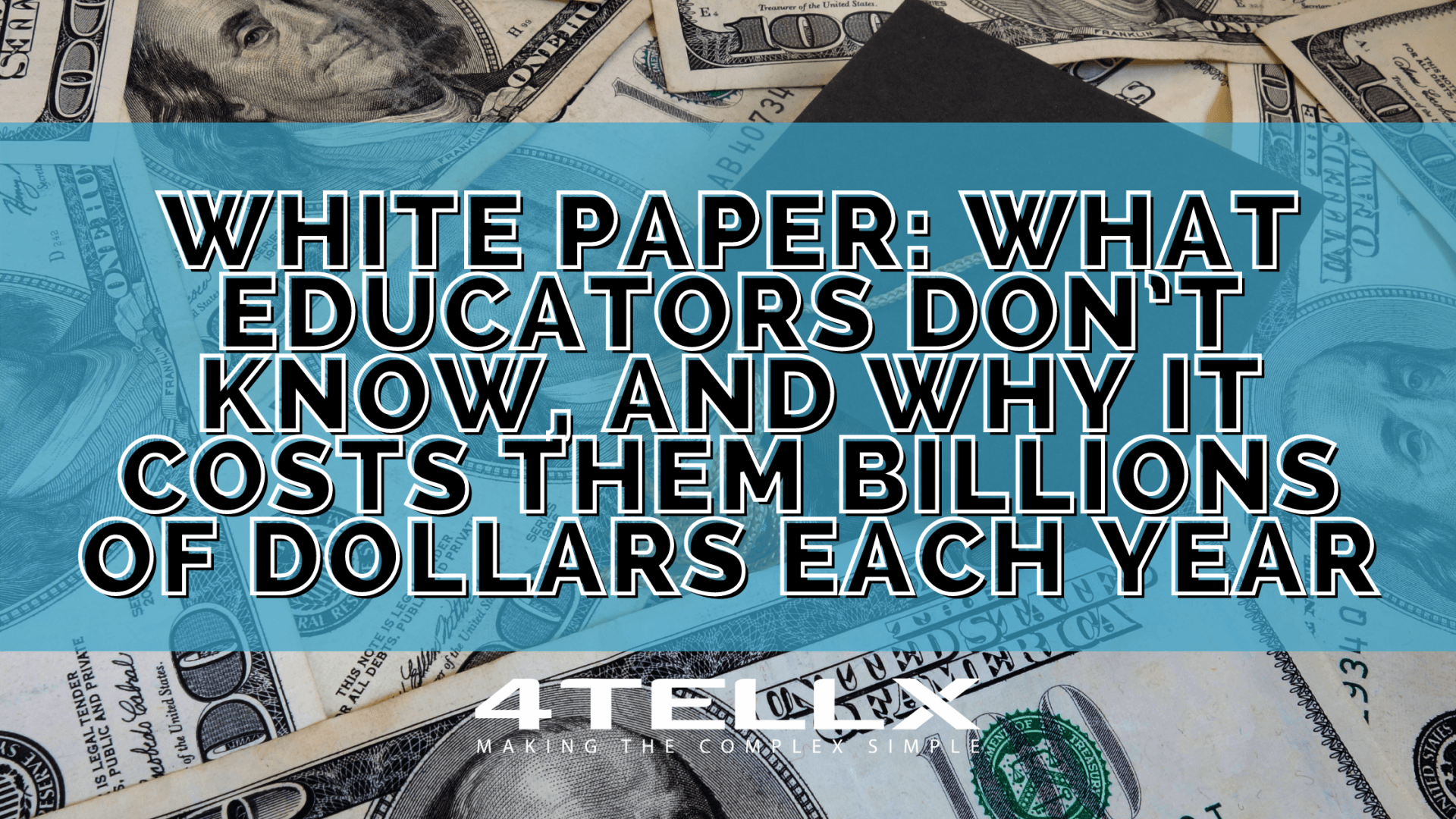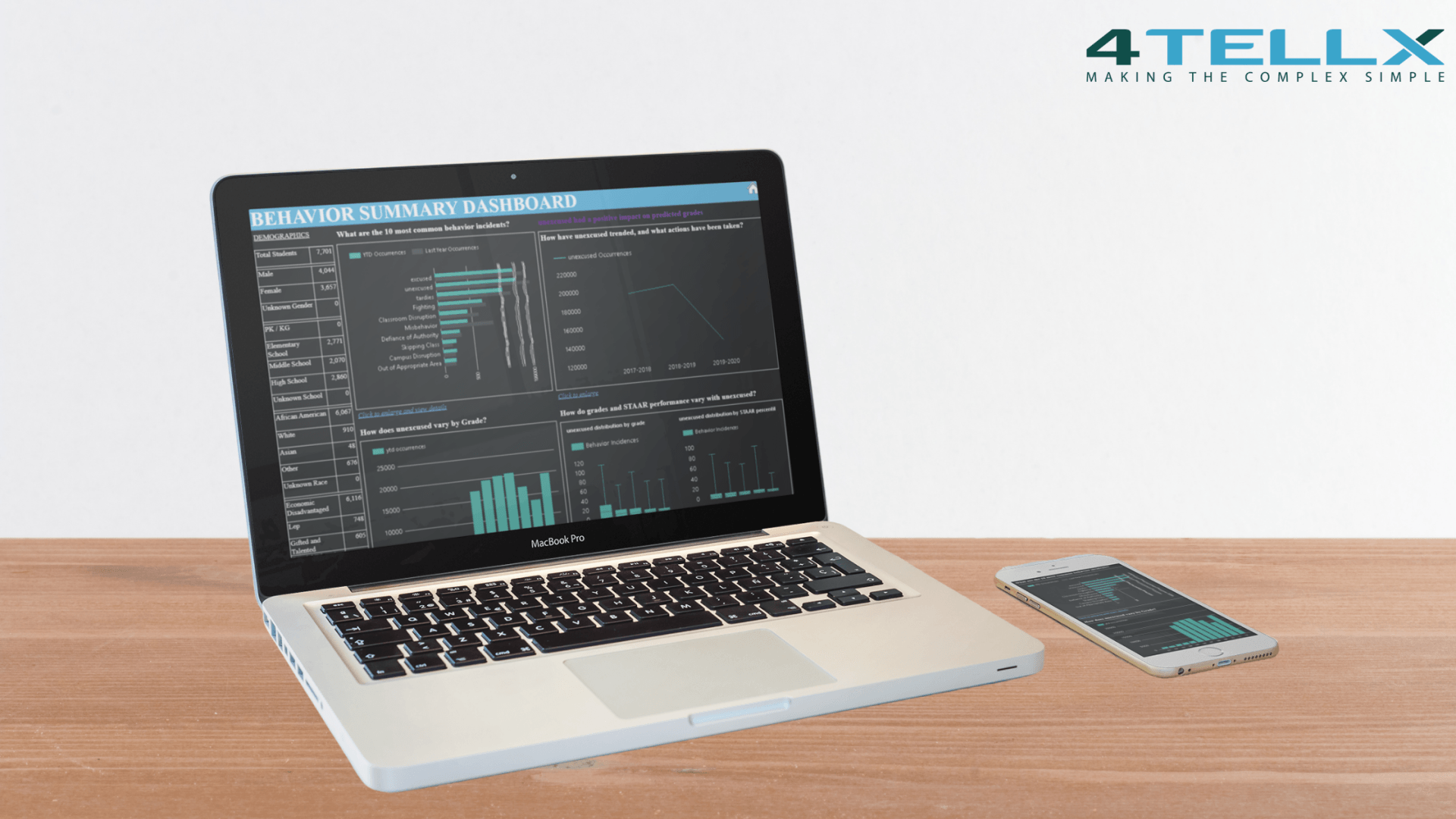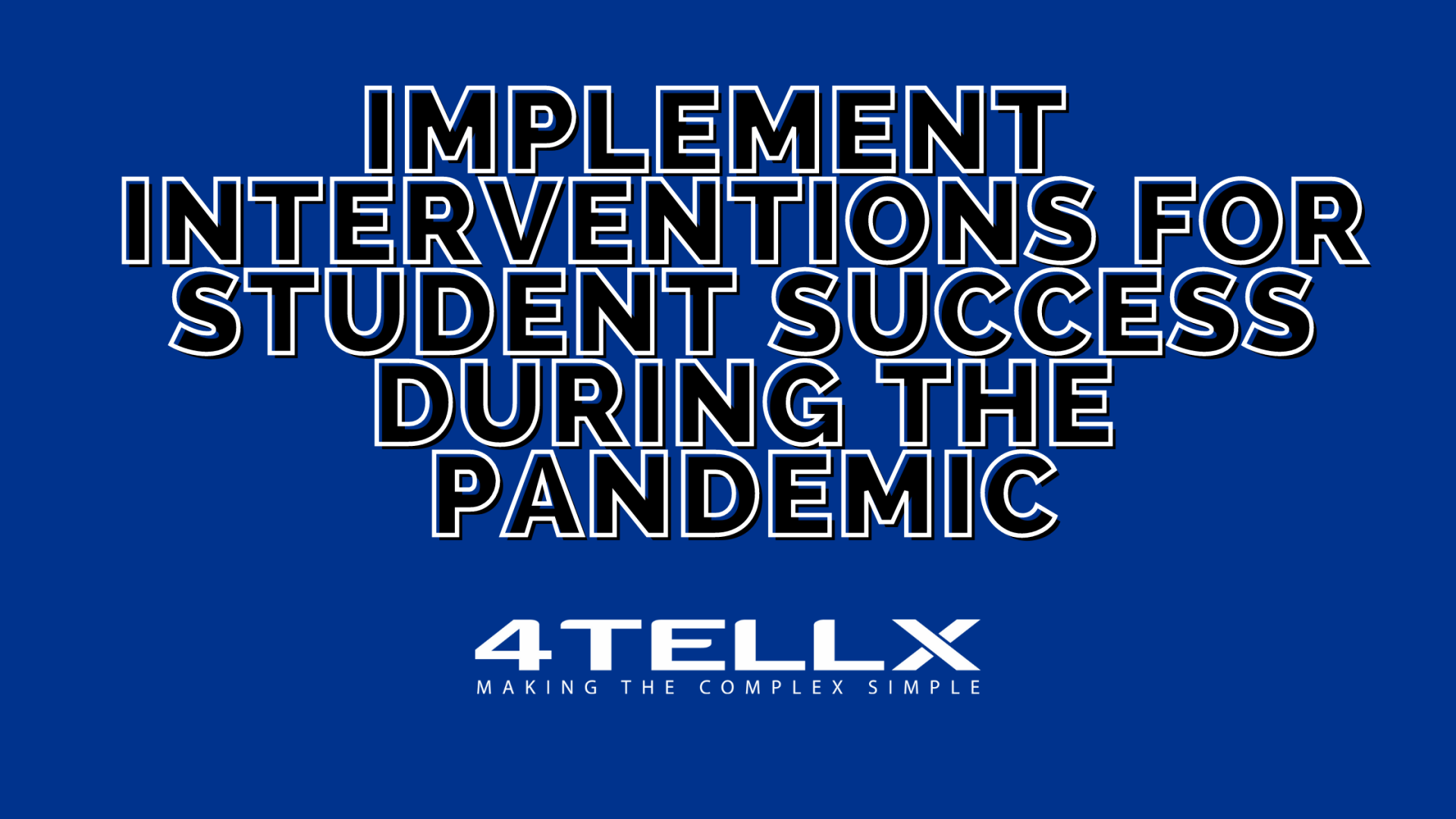A Big Data in Texas Education
Data is not a four letter word. It’s viewed by some as a miracle drug, and vilified by others as snake oil. It has been used for good, and abused by evil. Data is knowledge, knowledge is power, and thus data is powerful.

Welcome to the school of tomorrow. One where our actions, decisions and processes are captured, and recorded, to be chopped up and parsed like a passage in Chaucer in an AP english class. Where each iteration we accumulate more knowledge and more power over our instanced interactions. Power to change our surroundings, our future, and our children, but the best part of this is the change we will make for us through our children’s education.
Big Data is dexterity. It is the ability to manipulate our future via sound predictions based upon captured points in time that illustrate best practices, reinforce sound advice, and reduce risk and waste. Big Data is rapid decision making made easy while at the same time nullifying many risks associated with such rapidity.
Big Data is the answer to how did the Cubs finally win the world series.
It took Theo Epstein, General Manager of the Chicago Cubs, 5 years to turn the Cubs around from middling mediocrity to the World Series Champions. He broke a 100 years old curse, using a data-driven approach to the game of Baseball, not once, but twice, he was also the GM of the curse-breaking 2004 Boston Red Sox. In the case of the Cubs it took years to build a winner, as he took over a team of scant resources and talent. While with Boston, the job was much easier, as the team had money, talent, and resources, as well as the competitive advantage of being one of the first teams to use a data-driven approach. Big Data wins championships.
These days resources are scarce in the public school world. What would you do with extra time, money, and brain power? A data-driven approach is aimed at Maximizing your efficiency, mitigating risk, and eliminating decision fatigue.
We have
a road map to get you up today’s standards in data science, analytics, and application. One that starts with both the delivery of any archival data, paired with capturing new data points at several key points and from several key areas. This is a process in which the aggregation of data snowballs, at first this can feel tedious, then as dashboards quickly become the norm, the benefits become realized. Based on a myriad of academic, social, demographic, cognitive, and behavioral measures, we predict student performance in the classroom, on standardized exams, and college readiness. We can assess the impact of specific interventions on district-level performance, helping administrators make programmatic decisions to improve outcomes. Using this observed and predicted performance data, we categorize students into a group who could most benefit from interventions, like tutoring, test prep, additional contact hours, or gifted and talented programs. And from these personalized quantitative metrics,
we help guide students with that which will most benefit them. Providing an unbiased estimate of course effectiveness while controlling for their class representation.
In the world of Healthcare and medicine, things as simple as a data-driven approach to nurse scheduling can have a profound life saving effect. An industry where schedules used to run on paper, now with the power of predictive scheduling and analytics, can effectively predict staff shortages and patient needs up to 120 days in advance and schedule accordingly. This also reduces
overworked staff, burnout and operational fatigue. Big Data saves lives.
All this is not to say that the wisdom and operational intelligence of admin and staff are to be tossed into the waste bin of history. The arrival of big data has significantly changed every industry it has touched. Especially when this data has been paired with the existing intelligence structures. In Nursing, the arrival of big data has been used to better establish first order best practices and eliminate needless time and money wasting procedures, in an industry where risk is substantial and the cost can be precipitous.
Predictive analytics, and the time is now to learn how to incorporate big data into your daily decision making. Imagine being able to make decisions with less ambiguity, more mental clarity, and less fatigue.
Decisions that can be backed up by stats and trends and yield more accurate results. Big data has ways to help you look at your known data differently and throughout the lifetime of a child. Shining a light on unknown unknowns to help increase efficiency. Create a competitive advantage through learning how to read our dashboards,
utilize predictive analytics and big data to improve student success and increase job security.
“School districts are quickly recognizing the power of a deep analysis into their historical data. We are identifying trends in areas like “Interventions”, so school districts can evaluate an ROI for the various programs they run. This enables campus administrators to make more informed decisions which boosts performance and motivates teachers.“
Eric Shaffer, Chief Operations Officer at 4TellX






